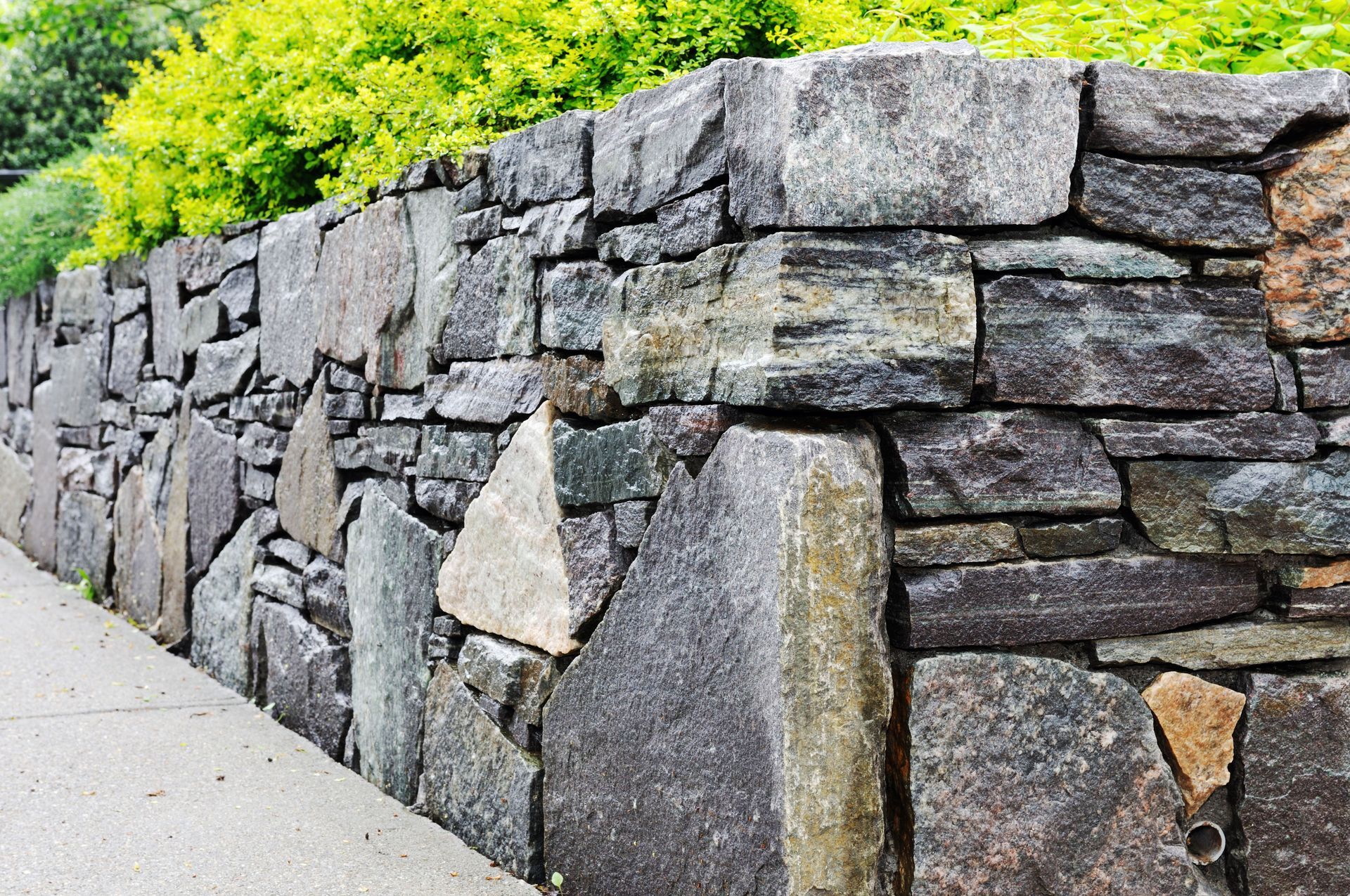August 24, 2025
This article examines the vital role hardscaping contractors play in implementing effective erosion control and drainage solutions. It discusses the diverse techniques and materials these professionals use to manage water flow and stabilize soil. The piece also highlights the importance of careful planning to ensure both functional and long-lasting results. Additionally, it explores how these efforts enhance environmental sustainability while boosting overall property value.
Recognizing Erosion and Its Impact
Erosion is a natural process where soil, rock, or dissolved material is gradually worn away and removed by natural forces such as wind or water. This process can be accelerated by human activities, including deforestation, overgrazing, and unsuitable agricultural practices. Urban development without proper drainage also contributes to increased erosion by allowing excess runoff to strip land surfaces. Hardscaping contractors are critical in designing structures that minimize erosion, using techniques to stabilize soil. By understanding the causes, they can implement the best methods to mitigate erosion effectively.
Erosion drastically changes the aesthetic and structural integrity of landscapes. It leads to the loss of fertile topsoil, adversely affecting plant growth and agricultural productivity. Moreover, significant erosion can reshape land profiles, creating unsightly gullies and altering drainage patterns. Hardscaping contractors often work to prevent these changes by installing protective measures like retaining walls and terraces. Through strategic planning, they help maintain the desired landscape appearance and function.
Uncontrolled erosion can have severe environmental impacts, including sedimentation of water bodies, impacting aquatic life. Additionally, it contributes to increased pollution as eroded soil can carry pesticides and other pollutants into waterways. As sediment accumulates, it diminishes water quality, affecting the ecosystem and potentially human health. Hardscaping contractors play a crucial role in implementing systems that reduce runoff and filter out sediments, thereby protecting the environment. Sustainable design practices minimize these adverse effects by prioritizing natural features and reducing artificial structures that exacerbate erosion.
Erosion control is essential in various settings, from urban environments to rural agricultural lands. In urban areas, effective erosion control ensures that infrastructure remains stable and operations proceed without costly interruptions. Rural settings, particularly agricultural lands, require erosion management to preserve soil health and crop productivity. Hardscaping contractors design and implement customized solutions to suit specific land uses and environmental conditions. Their work is vital in protecting landscapes from erosion across diverse environments, ensuring long-term sustainability and utility.
Implementing Hardscaping for Erosion Control
Hardscaping refers to the use of constructed, non-living materials like stone, concrete, and wood to enhance landscapes. This type of landscaping provides stability, aesthetic appeal, and functional benefits to outdoor spaces. In erosion control, the strategic installation of hardscapes effectively manages soil movement and water runoff. The benefits include reduced erosion rates, improved drainage, and added property value. Hardscaping contractors use these principles to design solutions that meet the dual needs of aesthetic beauty and functional resilience.
Various materials are integral to hardscaping solutions for erosion control. Stone and concrete are commonly used for their durability and structural capabilities, ideal for retaining walls and pathways. Wood and synthetic materials also feature in projects, providing versatility and customization options. According to Masonryandhardscapes.org, concrete slab units saw a 9.5% drop in average production, prompting contractors to explore innovative materials and methods. Each material has unique properties that cater to specific scenarios, allowing contractors to select the most effective options for controlling erosion.
Contractors utilize a variety of techniques to effectively manage and mitigate erosion. Retaining walls are built to hold back soil in sloped areas, preventing landslides and instability. Contoured pathways and terraces channel rainwater appropriately, reducing surface runoff and soil displacement. Another method involves the use of permeable paving to allow water infiltration, which minimizes runoff and retains soil moisture levels.
Hardscaping solutions often complement softscaping, which involves live plant materials to manage landscapes. While hardscaping provides stability and structural advantages, softscaping offers ecological and biodiversity benefits. A balanced integration of both techniques ensures comprehensive erosion control, leveraging the best properties of each. Hardscaping focuses on durability and structure, whereas softscaping focuses on natural aesthetics and environmental harmony.
Providing Effective Drainage Solutions
Effective drainage system design relies on fundamental principles tailored to specific landscape needs. Systems must efficiently collect, convey, and discharge water to prevent localized flooding and soil erosion. Grading and contouring landscapes to facilitate natural water flow is an essential step in the design process. Hardscaping contractors employ practices such as integrating catch basins and swales to manage excess water effectively. By adhering to these principles, contractors create robust drainage solutions that protect landscapes and infrastructure.
Materials used in hardscaping drainage solutions include concrete, plastic, and geotextiles, chosen for their functionality and durability. Concrete creates robust storm drains and culverts, handling large volumes of water effectively. Plastic piping systems offer flexibility in design, enabling seamless integration into diverse environments. Geotextiles reinforce surfaces and facilitate filtration, reducing sediment build-up and maintaining water quality. These materials are selected based on their specific advantages, aligning with project needs and long-term sustainability goals.
Integrating drainage solutions into landscape design requires a holistic approach that balances aesthetics with functionality. Hardscaping contractors plan structures and features that seamlessly blend into the environment while managing water efficiently. The integration of bioswales and rain gardens serves dual purposes, adding beauty and natural water management. Designing landscapes with water flow in mind ensures efficient drainage without compromising visual appeal. Effective integration results in landscapes that are both visually pleasing and resilient against environmental challenges.
Overcoming Challenges in Hardscaping Projects
Hardscaping contractors face numerous design and construction challenges that require innovative thinking and problem-solving skills. Site-specific factors such as soil type, slope, and climate conditions necessitate tailored solutions that are often complex to execute. These challenges demand meticulous planning, accuracy in design, and adaptability to changing circumstances. Moreover, ensuring structural integrity and aesthetic appeal within tight constraints calls for expertise and creativity.
Compliance with regulations and standards is a multifaceted challenge faced by hardscaping contractors. Navigating the intricacies of local zoning laws, environmental regulations, and safety codes requires detailed knowledge and careful planning. Contractors must ensure that projects meet all legal requirements, which involves comprehensive documentation and adherence to established practices. This regulatory landscape can be complex, demanding a proactive approach to maintain compliance and avoid costly penalties.
Weather and environmental uncertainties significantly affect the planning and execution of hardscaping projects. Unpredictable weather patterns, storms, and seasonal changes pose risks to construction timelines and material integrity. Contractors must build flexibility into their plans, allowing for modifications in response to shifting conditions. Utilizing robust materials and techniques capable of withstanding environmental stresses is crucial for long-term resilience.
Meeting customer expectations requires effective communication and a thorough understanding of client vision and needs. Clients often prioritize timelines, aesthetics, and functionality in their projects, presenting contractors with the challenge of balancing these elements. A comprehensive approach that includes regular updates and consultations is crucial for managing expectations and addressing concerns promptly. Hardscaping contractors need to align project goals with customer interests without undermining practical constraints and performance standards.
Hardscaping contractors play a vital role in erosion control and effective drainage solutions. With evolving methods and materials, collaboration with environmental experts, and a focus on sustainable practices, they address current challenges and prepare for future demands in landscape management. The integration of innovative techniques and materials, alongside strategic partnerships, ensures resilience and adaptability in the face of environmental and technical challenges. Contact JJ’s Outdoor to learn more about hardscaping solutions for erosion control.



